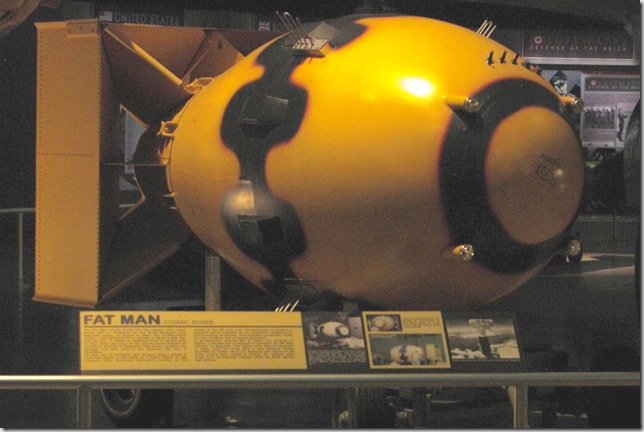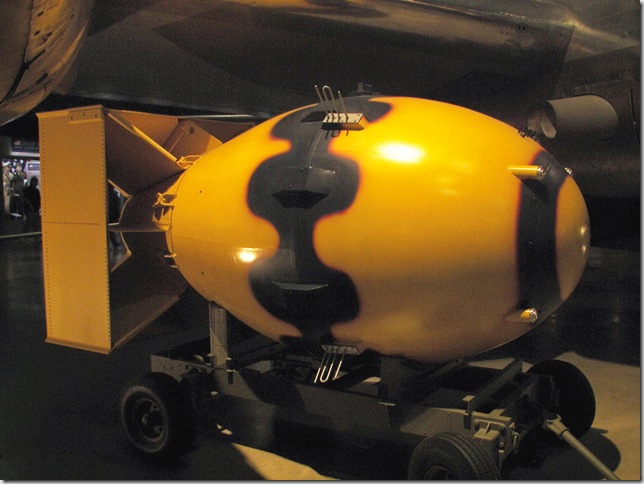Atomic bomb dropped on Nagasaki
On this day in 1945, a second atom bomb is dropped on Japan by the United States, at Nagasaki, resulting finally in Japan’s unconditional surrender.
The devastation wrought at Hiroshima was not sufficient to convince the Japanese War Council to accept the Potsdam Conference’s demand for unconditional surrender. The United States had already planned to drop their second atom bomb, nicknamed “Fat Man,” on August 11 in the event of such recalcitrance, but bad weather expected for that day pushed the date up to August 9th. So at 1:56 a.m., a specially adapted B-29 bomber, called “Bock’s Car,” after its usual commander, Frederick Bock, took off from Tinian Island under the command of Maj. Charles W. Sweeney. Nagasaki was a shipbuilding center, the very industry intended for destruction. The bomb was dropped at 11:02 a.m., 1,650 feet above the city. The explosion unleashed the equivalent force of 22,000 tons of TNT. The hills that surrounded the city did a better job of containing the destructive force, but the number killed is estimated at anywhere between 60,000 and 80,000 (exact figures are impossible, the blast having obliterated bodies and disintegrated records).
General Leslie R. Groves, the man responsible for organizing the Manhattan Project, which solved the problem of producing and delivering the nuclear explosion, estimated that another atom bomb would be ready to use against Japan by August 17 or 18-but it was not necessary. Even though the War Council still remained divided (“It is far too early to say that the war is lost,” opined the Minister of War), Emperor Hirohito, by request of two War Council members eager to end the war, met with the Council and declared that “continuing the war can only result in the annihilation of the Japanese people….” The Emperor of Japan gave his permission for unconditional surrender.
“Atomic bomb dropped on Nagasaki.” 2008. The History Channel website. 8 Aug 2008, 04:20 http://www.history.com/this-day-in-history.do?action=Article&id=6545.

The thing I have always found morbidly fascinating about this bomb is that it doesn’t explode. It implodes. Inside the bomb is a central core of plutonium 239 and formed around that core is a soccer ball-like shaped charge of alternating fast and slow burning detonators. When it detonates the soccer ball collapses in on the plutonium core compressing it until it implodes. A split second after imploding a massive release of energy results in devastating destruction, which, when used on August 9, 1945, convinced Emperor Hirohito that Japan faced annihilation if it continued the war.

The Fat Man atomic bomb can be found at the National Museum of the United States Air Force in Dayton, Ohio.
For more information about this weapon and others follow these links: http://www.nationalmuseum.af.mil/exhibits/
or: http://www.nationalmuseum.af.mil/factsheets/factsheet.asp?id=1016






Recent Comments